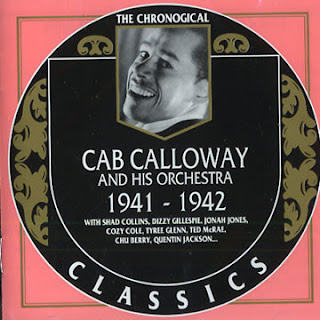 |
Add caption
|
I hesitate to include Stan Kenton during these troubled times and periods of reflection on racism in the country. He was a known racist and lately this is causing him to being "cancelled" as I see that this fact comes up every time his name is mentioned on social media. He did lead some great bands and produced some terrific music. He never stopped leading a big band even after the Swing era was done and found the solution in having his groups playing in college and universities, leading towards the development of jazz education at the college level. Ironically, as Ethan Iverson put it, in a recent post on DTM, Wynton Marsalis helped change the focus of jazz education away from Stan Kenton: "We needed less North Texas State and more Duke Ellington in the mix, and Wynton corrected our course." I still think his music demands to be understood. So many great musicians and arrangers have passed through his band that it's become a part of the jazz fabric.
The recordings on
The Uncollected Stan Kenton Volume 1 contain what I believe are the earliest recorded examples of Stan Kenton and his Orchestra. The band's first recordings for Decca were on September 11, 1941 and these were recorded between mid-August and September 19, 1941. The band was having a successful run at the Rendezvous Ballroom at Balboa Beach close to Los Angeles and were asked to record a series of transcriptions, recordings made directly onto oversized acetate discs, for airplay. The sound is excellent. Sometimes there's a lack of balance between the soloist and the rest of the band, but otherwise everyone is very cleanly including the guitar.
 |
2000 European compilation
|
Even though the tracks from this recording are from the first year of the band's existence, there are many hints of what's to come. The focus is almost entirely on the arrangers as most of the music is written out save a few solos and vocals. Besides Kenton, the arrangers are Ralph Yaw and Joe Rizzo. Yaw had written for big bands in the 1930s, but I couldn't find much information for Rizzo who was a bassist. The arrangements are overall strong and they manage a huge sound out of a small band (for Kenton) with three trumpets, two trombones, five saxes, and four-piece rhythm section, but the sound is huge. In the liner notes, bassist Howard Ramsey commented that it was the saxophone section that made them stand out and listening to the tracks I hear standard saxophone voicings in open (and closed) position. It's a very rich sound as each voice really stands out. It fills out the texture and sounds unusual for 1941. It really cushions the brass and perhaps this was the key to having very high trumpets that Kenton would later be famous for.
My main complaint with the record is just the on-top-of-the-beat swing feel that's always on edge. This is exacerbated by the use of consecutive off-beat punctuations that is heard on just about every tune. This was obviously a favorite device of Kenton's and yes it does provide a lot of tension, but it's overdone. I miss the relaxed swing feel, but then again the tension in the feel and rhythms just adds to the drama of the music and drama is a central element to Kenton's music.
Overall, the tunes do not often rely on standard chord progressions (I don't think I heard a blues on here) and in fact there are a lot of instances of unusual harmonic changes. Major triads moving by half-step is a favorite and can be beard on "Elegy", "El Choclo", and "Trumpet Symphonette". This sound is reminiscent of a lot of Spanish music ("Malaguena" for example) and is something that Kenton would come back to. Other examples of interesting harmonies and color tones are the band's theme "Artistry in Rhythm", "Prelude to Nothing", and "Balboa Bash".
"Trumpet Symphonette" is a trumpet feature and foreshadows further ambitious works. There are a couple of familiar sounds here: Yaw's "Marvin's Mumble" is his answer to Benny Goodman's "Sing Sing Sing" with the tom drums prominently featured solo and a duet with trumpet. "Safari", also by Yaw, sounds like a tribute to Duke Ellington's "jungle sound".
 |
Red Dorris
|
The main soloists are Jack Odrean on alto, Red Dorris on tenor saxophone and vocals, and Earl Collier and Chico Alvarez on trumpet. They are not as strong or as interesting as the arrangements. Even at this early stage, Kenton's vision for his music is already set and is not commercial. Though there are a couple of novelty songs and some pop vocal numbers, his desire to incorporate serious music ideas are evident here. The ensembles are so
tight and I'm sure it was part of their success as a dance band, perhaps to compensate for the bold musical risks. The arrangements are aggressive and played convincingly. The formula would be much improved upon but everything is in place in this compilation.






Comments
Post a Comment